Magic Beans
Developed by Jaquelyn Bell, PCM Play Intensive 2021
(FOCUS: Pre K, STEM, Creativity & Making, Design Thinking)
We know what seeds look like when we plant them and we know what seeds look like when a plant begins to grow. What does that seed look like in the process in between? In this lesson, children will experiment with seeds in cotton balls rather than soil. The use of cotton balls will allow the children to see the seed as it sprouts and grows roots. The children will be able to see how long a seedling takes to grow from the ”ground.” Children can chart and measure the growth of the seeds. They can also draw what they see from start to when a plant begins growing in their bean diary.
Materials
- Large bean seeds (They can be of any type of bean. If possible, get two different types of beans to compare.)
- Clear 8-ounce plastic water bottles, cut in half beforehand by adult
- Cotton balls, enough to fill the cut water bottle
- Notebook (Bean Diary)
- Crayons and pencils
- Ruler for measuring when the plant begins to grow
- A copy of Jack and the Beanstalk
Set Up
Place the bag of cotton balls on the table and cut the clear water bottles in half. Prepare package of beans/seeds and a dish for children to sort different types of beans. Children should have access to easy-grip tweezers.
Student’s Job
What do seeds need to grow? Can seeds be grown without soil? What does a seed look like when it sprouts a plant under the soil?
Take a small notebook and turn it into your Bean Diary. Decorate the front; inside, write the name of the bean you are using and draw a picture of what it looks like.
- Empty seeds into dish. Count how many seeds there are in the dish. Divide them into big and small using large grip tweezers made for children or large plastic tweezers. Let children spend time touching the seeds, poking and investigating the Individual seeds. Begin a conversation about what place their “magic beans” would take them. Encourage fun conversation using the story Jack and the Beanstalk.
- Fill the cut water bottle with cotton balls.
- Using the tweezers, take two seeds and place them on the edge of the bottles, halfway down into the cotton, so they can be seen through bottle.
- Water lightly to keep cotton balls moist throughout the experiment.
- Put the bottles in a warm, sunny window.
- On Day One, draw a picture of the seeds in the bottle in the Bean Diary.
- Continue to draw and record what is happening to the seed, including the roots. Predict how many days it will take to sprout in the cotton.
- Use the journal to write their own Jack In the Beanstalk story starring them. Encourage child to draw pictures In their journal of their fairytale. Let their imaginations run wild!
- Once plant grows above the cotton, continue to draw, adding leaves as they appear.
- If available, take photos of the growth and add to the Bean Diary.
Further Challenges:
If available plant two beans in soil and note the rate of growth. Did the bean plant grow faster in soil? In cotton? Or did they grow the same? Try different seeds. Do some seeds work better than others? (i.e. the bigger or smaller the seed?)
Teacher’s Job
Standards Alignment
RI EARLY LEARNING AND DEVELOPMENT STANDARDS: SCIENCE
COMPONENT 1: SCIENTIFIC INQUIRY AND APPLICATION
Children learn to plan for and carry out investigations and collect, evaluate, and communicate information.
COMPONENT 2: KNOWLEDGE OF SCIENCE CONCEPTS
Children explore the characteristics of objects and materials that are living, non-living, man-made, or naturally occurring.
RI EARLY LEARNING AND DEVELOPMENT STANDARDS: LITERACY
COMPONENT 6: EMERGENT WRITING
With modeling and support, use writing and or digital tools to communicate information, tell a story, or answer a question. Use writing to convey meaning (e.g., writing a note to themselves during play, writing a note to their mother, taking a restaurant “order” in a dramatic play area, writing a grocery list, etc.)
Connections to previous work?
Ideally, this connects to another activity where seeds are planted in soil.
Prepare/ Background Info
Background information needed might include what seeds need to grow and the life cycle chart of a seed.
Facilitation Strategies
Children should have access to all materials at the science center. Have a chart that shows the steps and a “journal” to record observations. Children should be able to touch the beans, plants, and roots as the plant grows. Each child should have their own bottle and can write their names on the bottle with a sharpie. The date planted should be noted either by the child or with a teacher’s help.
Play to Notice
Following directions, curiosity, conversation, and prediction.
Content Matter to Notice
Use of tweezers to pick up seeds/beans will help strengthen children’s fine motor skills in their hands. Children should count each bean individually and accurately. They should follow directions when told to put cotton balls into cup and position so they can be seen. Notice your child’s drawings and pictures of the experiment daily in their diary.
SEL to Notice
Notice if your child connects the experiment to the story of Jack and the Beanstalk. Listen to conversations about what is happening. Are children descriptive? Are they speaking in complete sentences? Listen to the back and forth between the children. Do they speak when appropriate? Are they listening to what the other person is saying before responding?
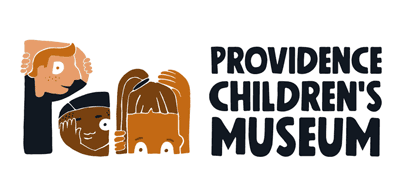

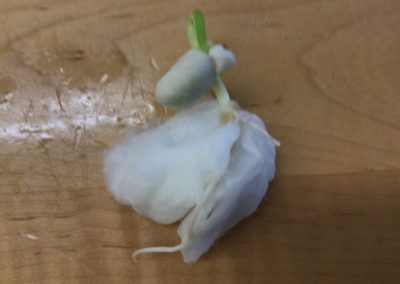
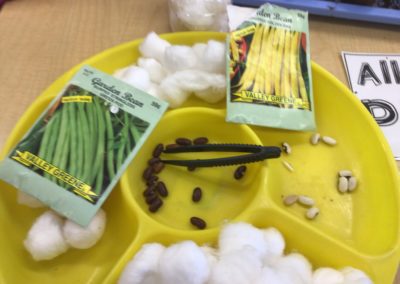
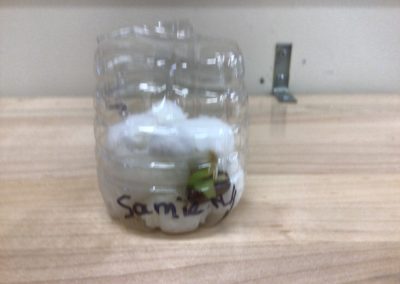
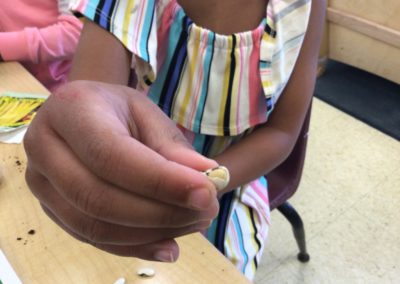
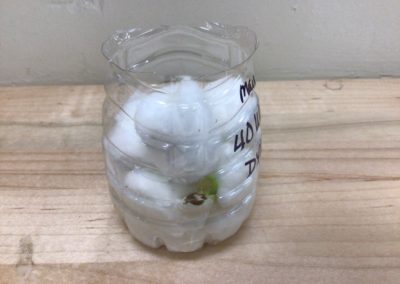
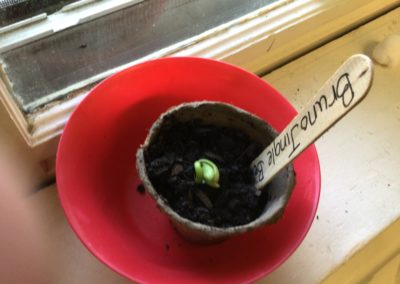
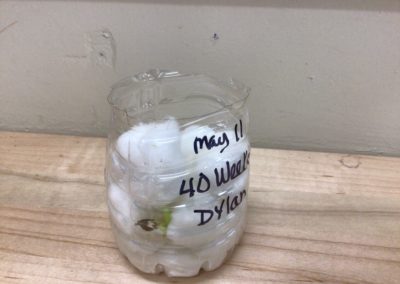
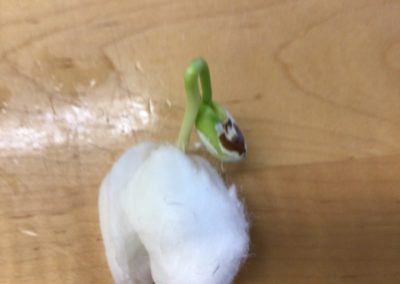
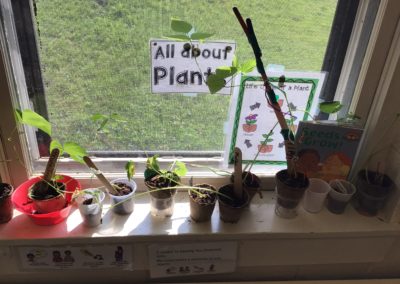
0 Comments